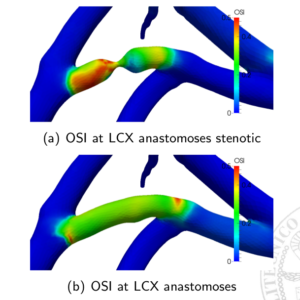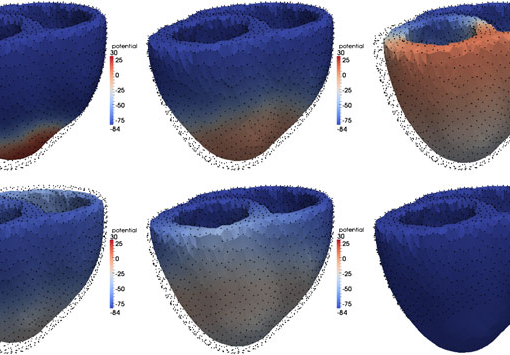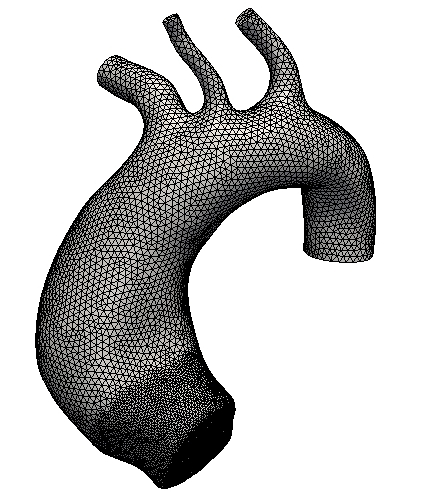It is well known that Coronary Artery Bypass Graft (CABG) failure in the long term is mainly due to restenosis, which can be related to sub-optimal haemodynamical conditions near the grafts.
Under this assumption, the research at MOX aims to a better understanding of CABG effects on coronary circulation and possibly to the improvement of long term surgery success. In particular we want to characterize fluid-dynamic quantities of clinical interest in different patient-specific configurations and study the sensitivity of the haemodynamics with respect to physical parameters and geometrical features (stenoses severity or grafting angles).
In our studies we couple patient-specific clinical data, a parametrized formulation and reduced order models allowing a comparison of the outcomes of different surgical interventions (e.g. grafting angles) or disease (e.g. stenoses severity) at greatly reduced computational costs.
Clinical Partner: Cardio-surgery and Radiology Divisions of Sacco Hospital, Milan, Italy.
Publications:
- Guerciotti B., Vergara C., Ippolito S., Quarteroni A., Antona C., Scrofani R., Computational study of the risk of restenosis in coronary bypasses. Biomechanics and Modeling in Mechanobiology. DOI:10.1007/s10237-016-0818-x
- F. Ballarin, E.Faggiano, S.Ippolito, A.Manzoni, A.Quarteroni, G.Rozza, R.Scrofani, Fast simulations of patient specific haemodynamics of coronary artery bypass grafts based on a POD Galerkin method and a vascular shape parametrization, J.Comput.Physics, to appear, 2015
Thesis:
- R. Ferrero – Numerical study of the fluid-dynamics in patient-specific coronary artery bypass grafts – MSc in Mathematical Engeneering, Politecnico di Torino – Advisors: L. Preziosi, A. Quarteroni, E. Faggiano – A.Y. ’12-’13
- F. Ballarin – Reduced-order models for patient-specific haemodynamics of coronary artery bypass grafts – Ph.D in Mathematical
Models and Methods in Engineering, Dipartimento di Matematica, Politecnico di Milano, 2015




